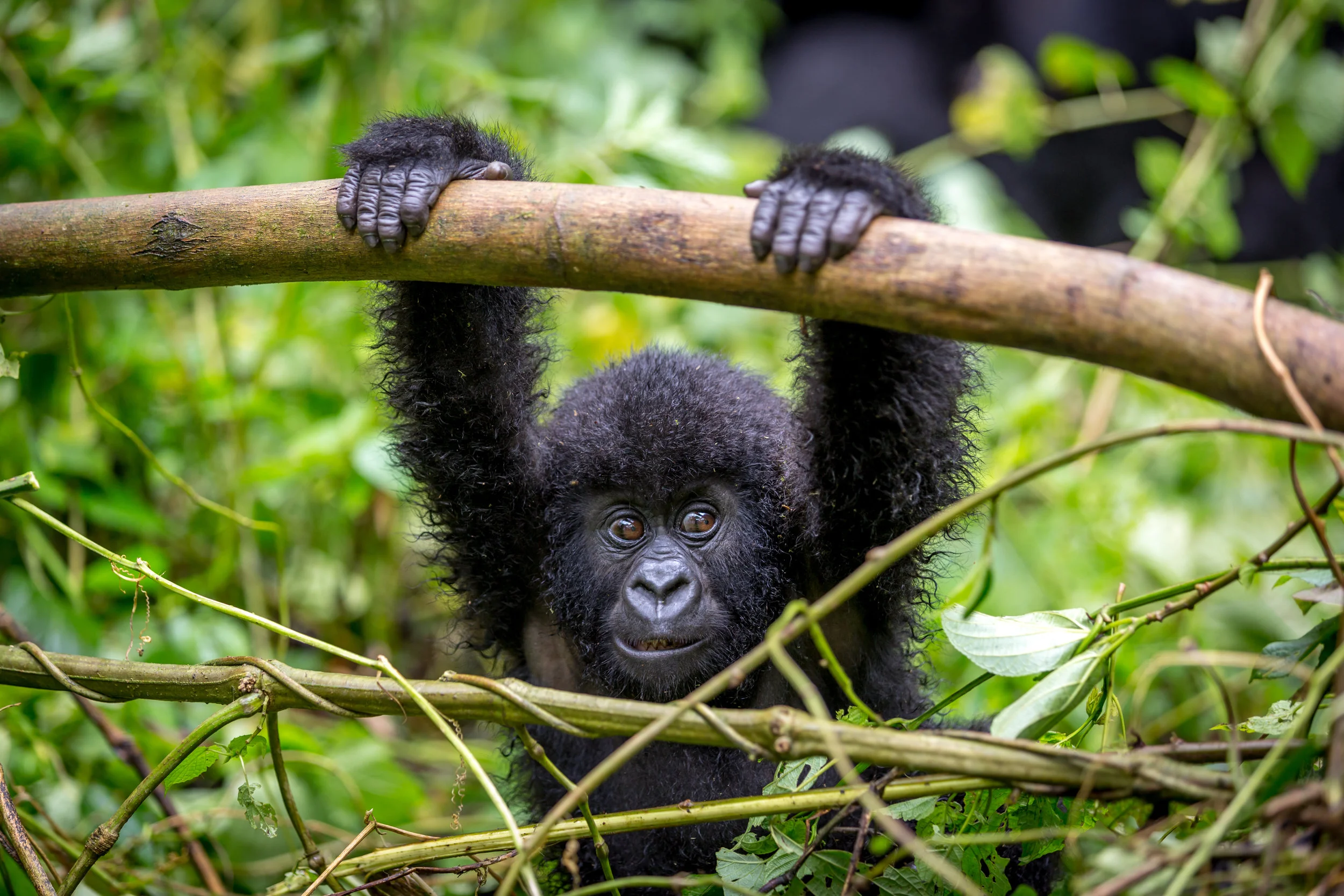Mountain Gorilla
"Regard" by Laurel Austin (Digital)
“Humans are apes in every sense of the word, but it’s a strange thing to watch us relate to the other species in our family. We talk about them as though they are all similar to one another, and different from us. We like to think we are in some other category — far away on some high cognitive hill. But there is no real reason to separate us. Our perch is less lofty than we like to think, and the other apes are more sentient than we give them credit for. I wanted to make a painting that touched on this theme.”
Your purchase is helping Expedition Art and Saving Species purchase land in Sumatra! Learn more about the project.
Habitat
Currently, the mountain gorilla is restricted to two small pockets of forests that are isolated from one another. They live in protected national parks, one in Uganda and one that spreads across the Democratic Republic of Congo, Uganda and Rwanda. They live in a large variety of forest ecosystems, including mixed and bamboo forests and subalpine grasslands.
Family life
Mountain gorillas have complex social structures. They live in large groups or troops with up to 30 individual members, including young males, infants and females of all ages. There is no dominant female in the troop, only a male called a silverback. The silverback organizes all of the troops activities, including eating, nesting and moving throughout its home range. Silverbacks can be highly aggressive when their dominance is challenged but mountain gorillas are generally calm and nonaggressive.
Lifespan
Mountain gorillas live an average of 35 years in the wild. They can live to 53 years in captivity.
Hunting Habits/Diet
The mountain gorilla eats large amounts of vegetation and spends about a third of its day foraging for roots, leaves, stems, herbs, vines, bark, shrubs and bamboo. They are strictly vegetarian.
Population
Fewer than 900 Mountain Gorillas remain.
Fun Fact
Mountain gorilla DNA is 97% similar to humans. In captivity, gorillas have displayed significant intelligence and have been successful in learning some simple sign language. Like human fingerprints, mountain gorillas can be identified by unique nose prints.
Why are They Endangered?
The mountain gorilla is the most critically endangered of all gorilla species. They are victims of poaching, human population encroachment and the high degree of civil unrest in the area in which they live. Habitat loss and fragmentation is the most significant threat to their survival, as illegal settlers have been known to clear vast swaths of forest technically protected for the gorillas. They are also vulnerable to human disease and can die from something as benign as the common cold.
Status
Critically Endangered


